Tattoo Art, the Inspiration behind Restaurant Sake Dojo
In Los Angeles' Japanese district lies a restaurant that stands out from the rest with its interior design inspired by Japanese tattoo art.
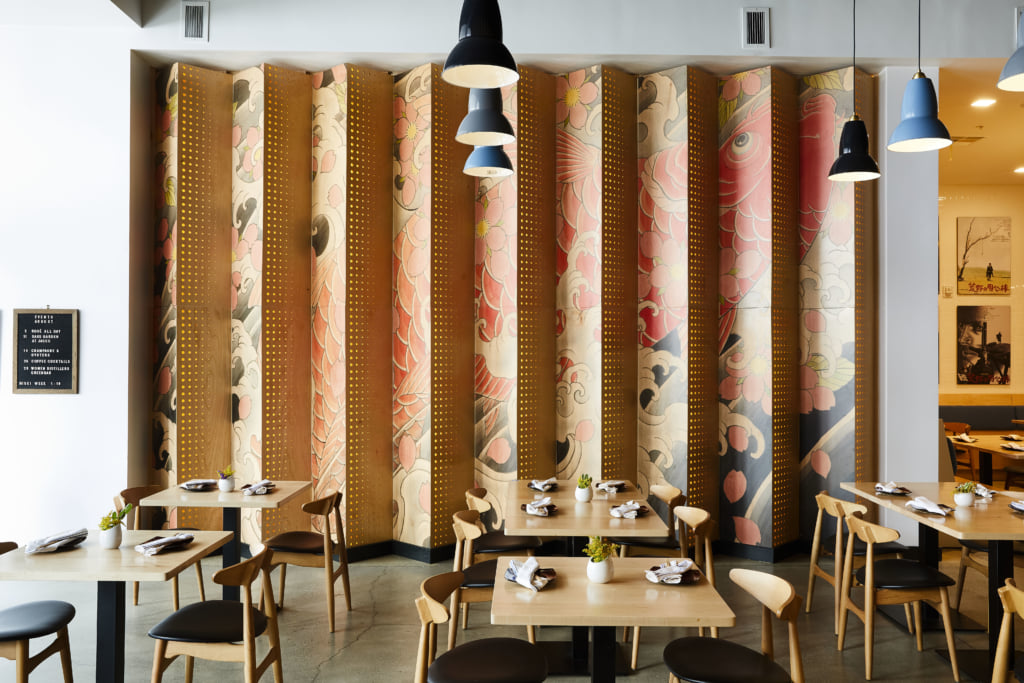
© Nicole LaMotte for Wick Architecture and Design
At Sake Dojo restaurant (also renowned for its excellent culinary offerings), whole sections of wall are decorated with aquatic-themed Japanese tattoo patterns. These perforated plywood panels let in the light and are also modular, making it possible to create private rooms by sliding them across like fusuma, traditional Japanese doors.
Opened in 2018, Sake Dojo is a restaurant located within the Mikado Hotel in Los Angeles’ Little Tokyo district. Known for its bar that offers over 120 varieties of sake, it also has a sushi bar and serves cuisine reminiscent of French bistronomy.
A tattoo artist serving as a painter
When it came to decorating the restaurant, architects from the firm Wick Architecture and Design worked hand in hand with the artist Horifuji, a San José-based Japanese tattoo specialist; it was he who produced the drawings of the tattoos that adorn the walls of Sake Dojo. The designs, much larger than an average tattoo, reveal all their minute details, thus demonstrating the sheer dexterity that would be required to transfer them to the skin in actual size. The ancient art of Japanese tattooing, which dates back to the country’s first inhabitants, is admired across the world, particularly in the US, but remains controversial in its country of origin.
The architects prioritised a rich mix of styles and themes for the other decorative elements, which include American film posters translated into Japanese—such as Wes Anderson’s The Life Aquatic (2004), in a nod to the restaurant’s overall theme. The space also displays vintage cameras and Japanese cookery books.
More information on the Sake Dojo restaurant can be found on its website.
Address: 333 E 1st Street Los Angeles, California, United States
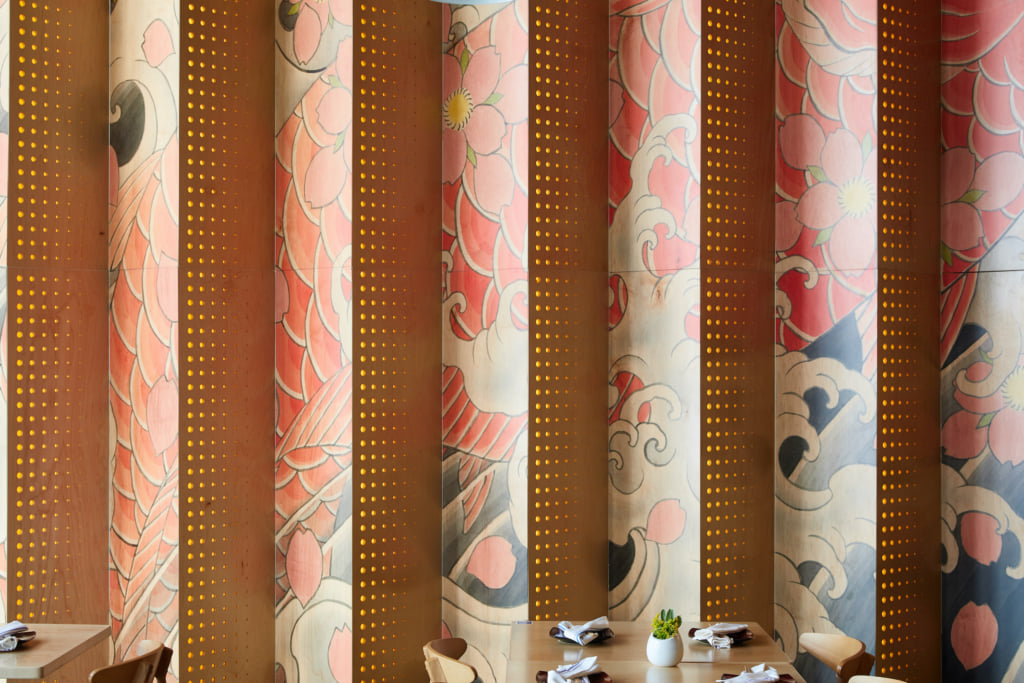
© Nicole LaMotte for Wick Architecture and Design
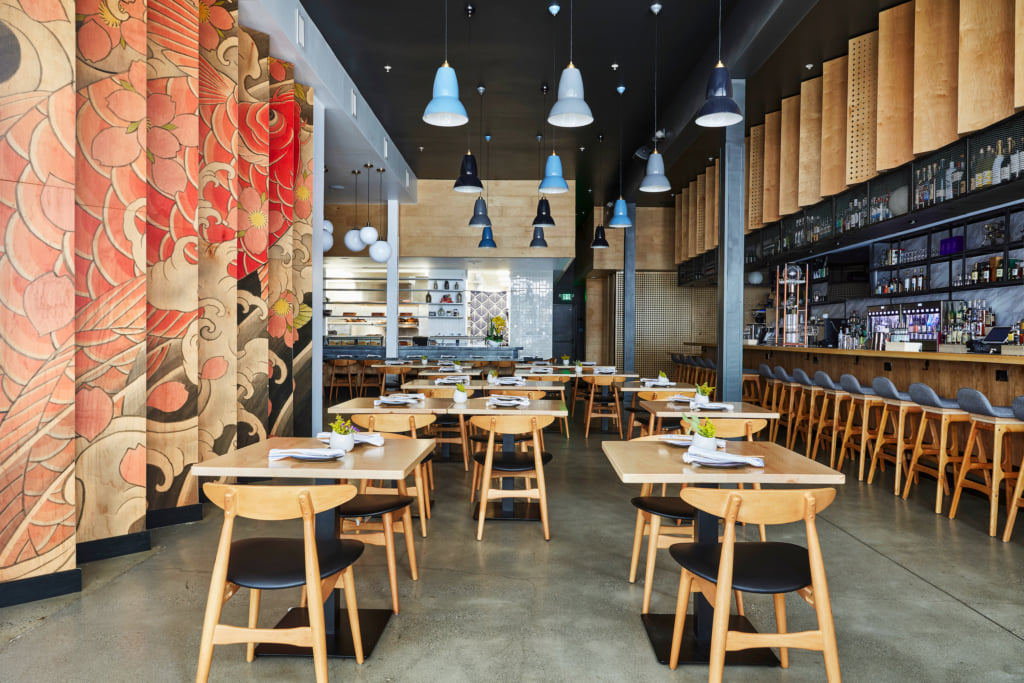
© Nicole LaMotte for Wick Architecture and Design
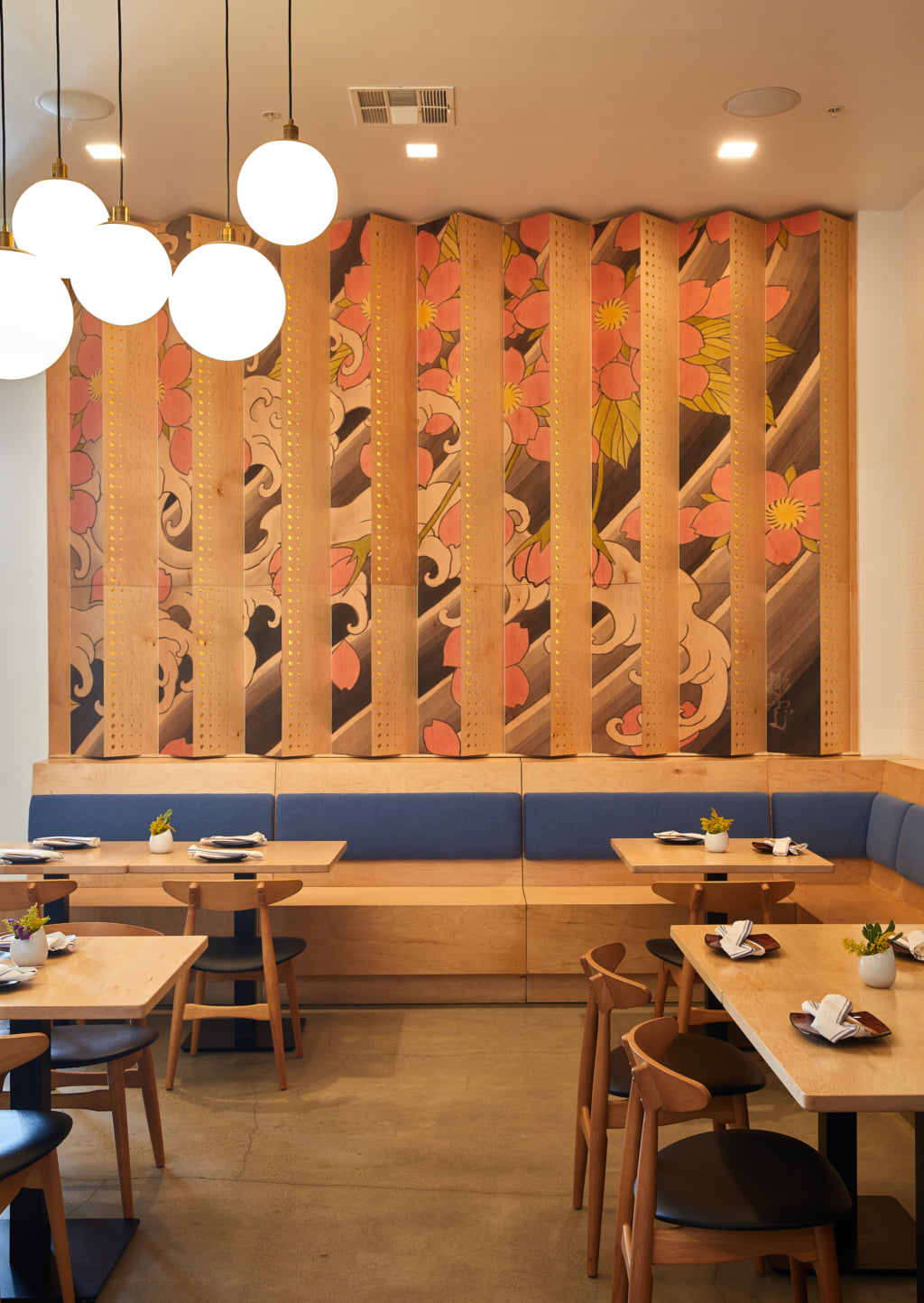
© Nicole LaMotte for Wick Architecture and Design
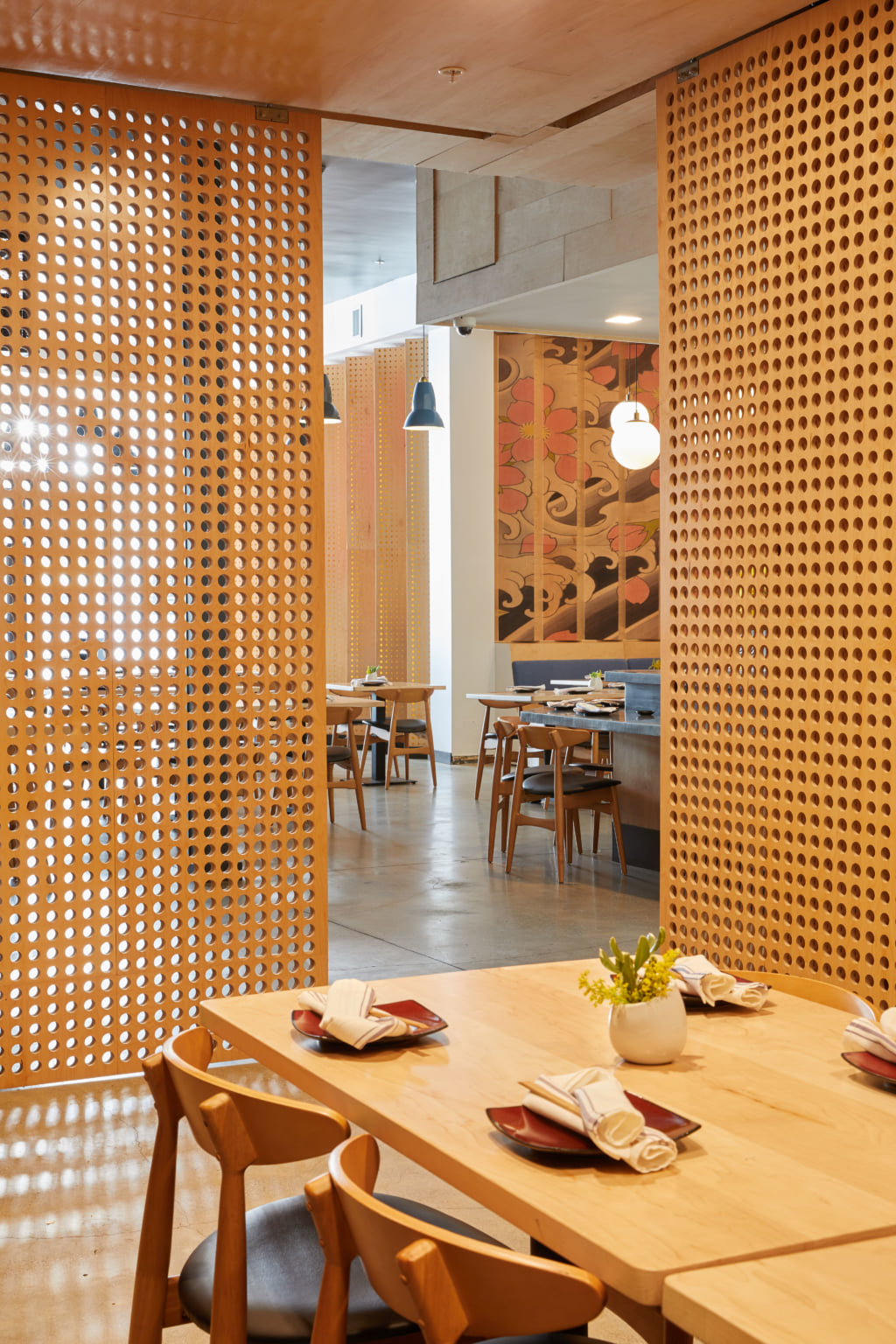
© Nicole LaMotte for Wick Architecture and Design
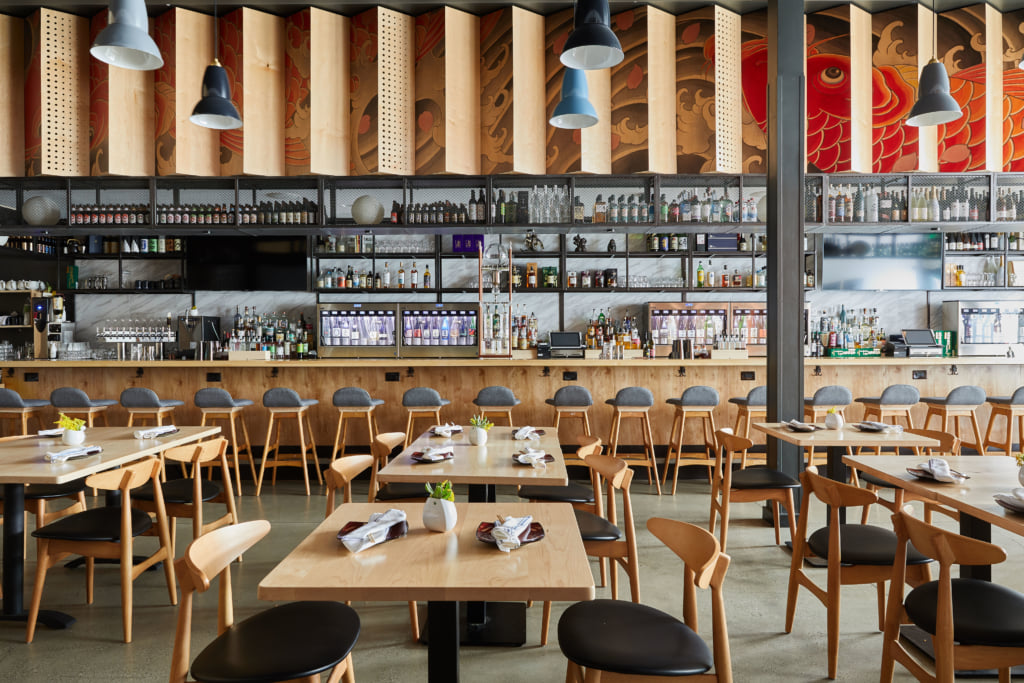
© Nicole LaMotte for Wick Architecture and Design
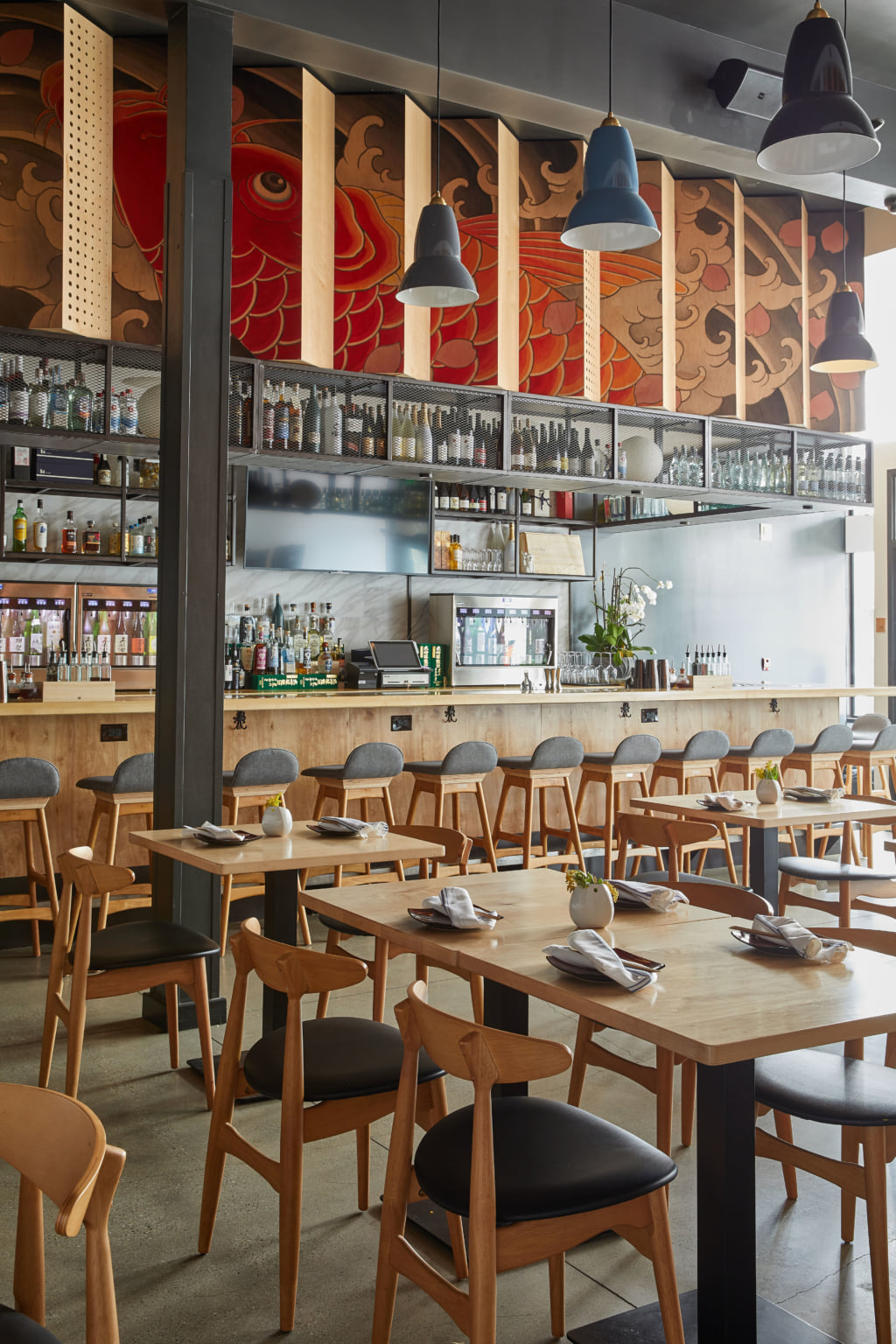
© Nicole LaMotte for Wick Architecture and Design
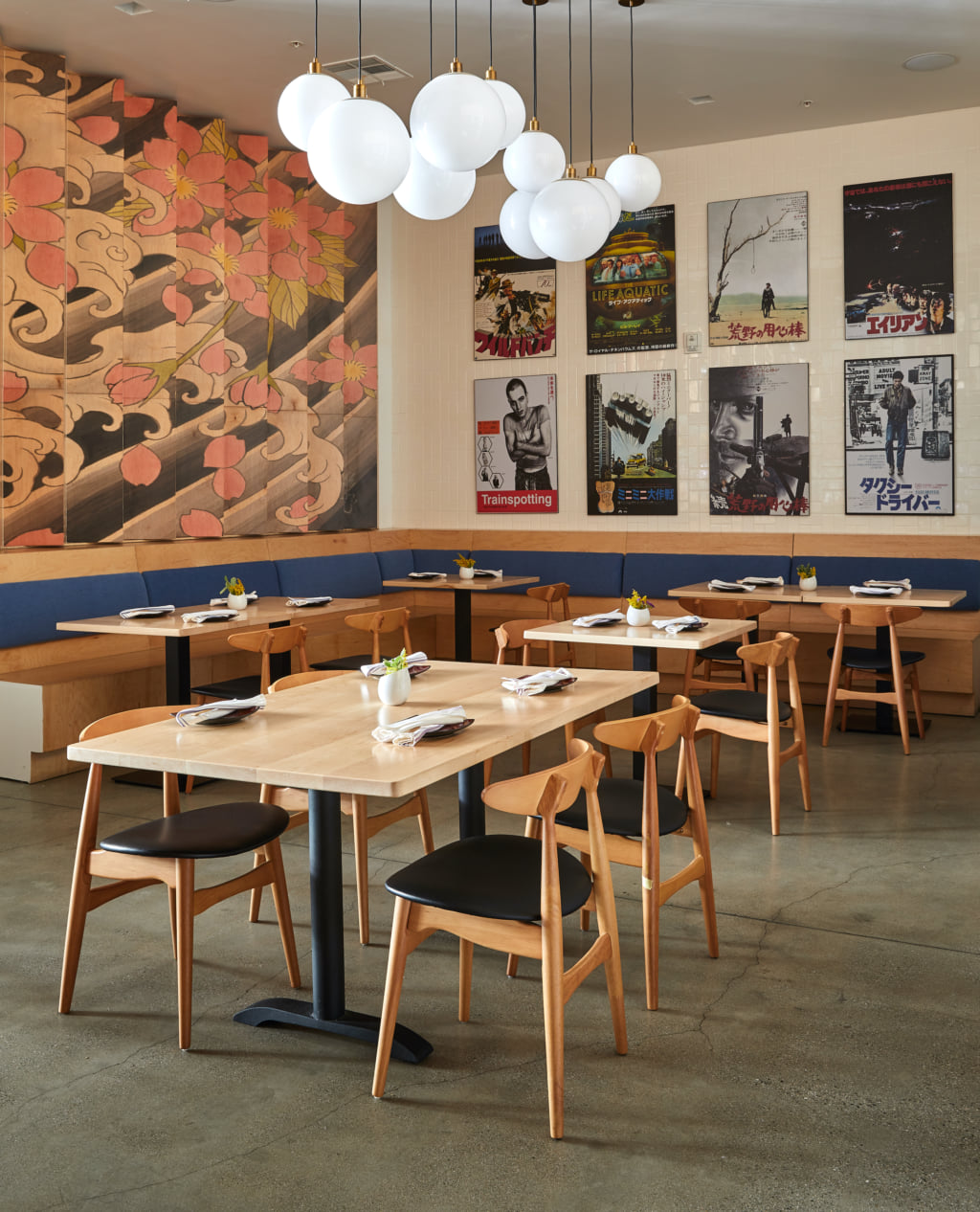
© Nicole LaMotte for Wick Architecture and Design
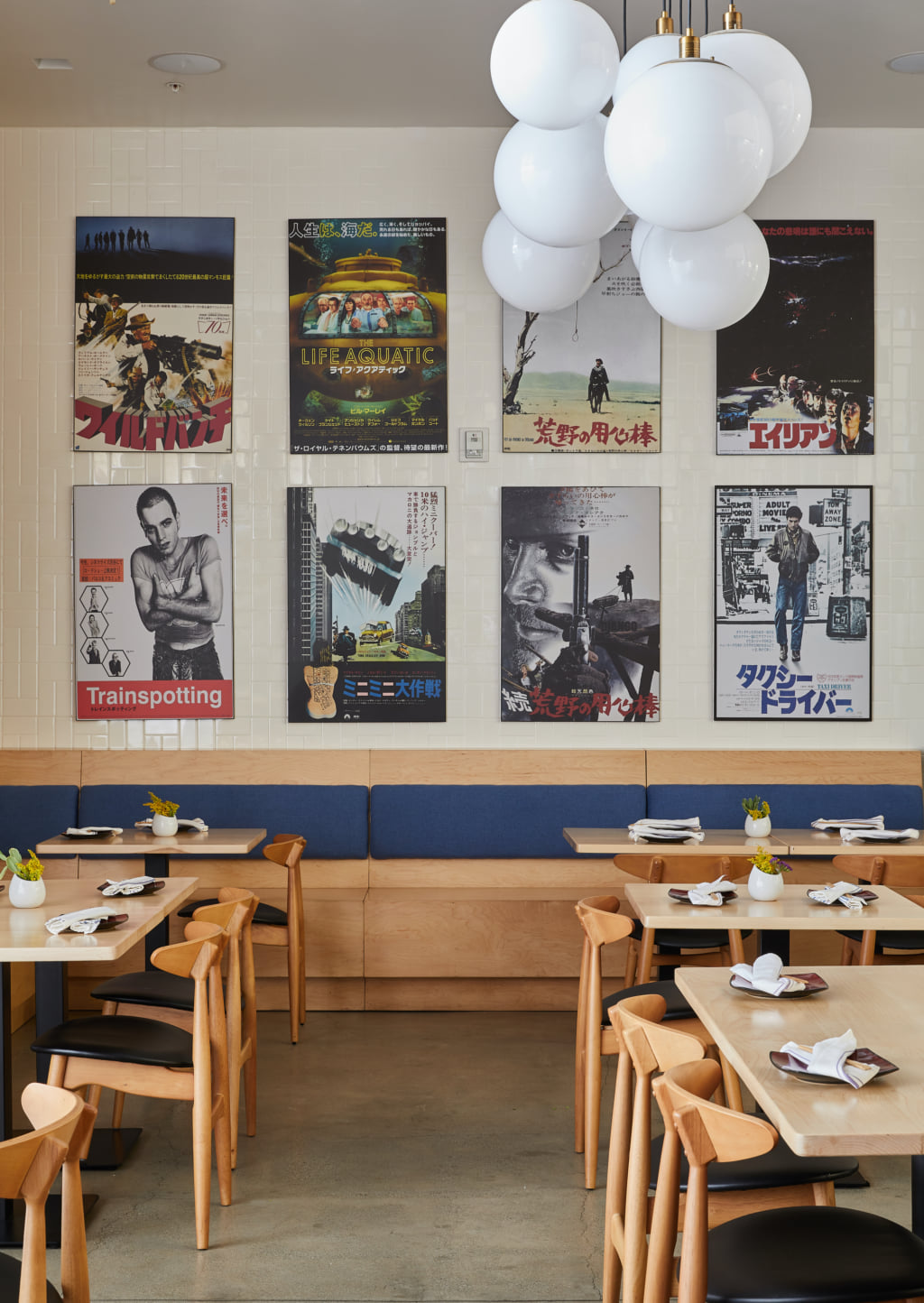
© Nicole LaMotte for Wick Architecture and Design
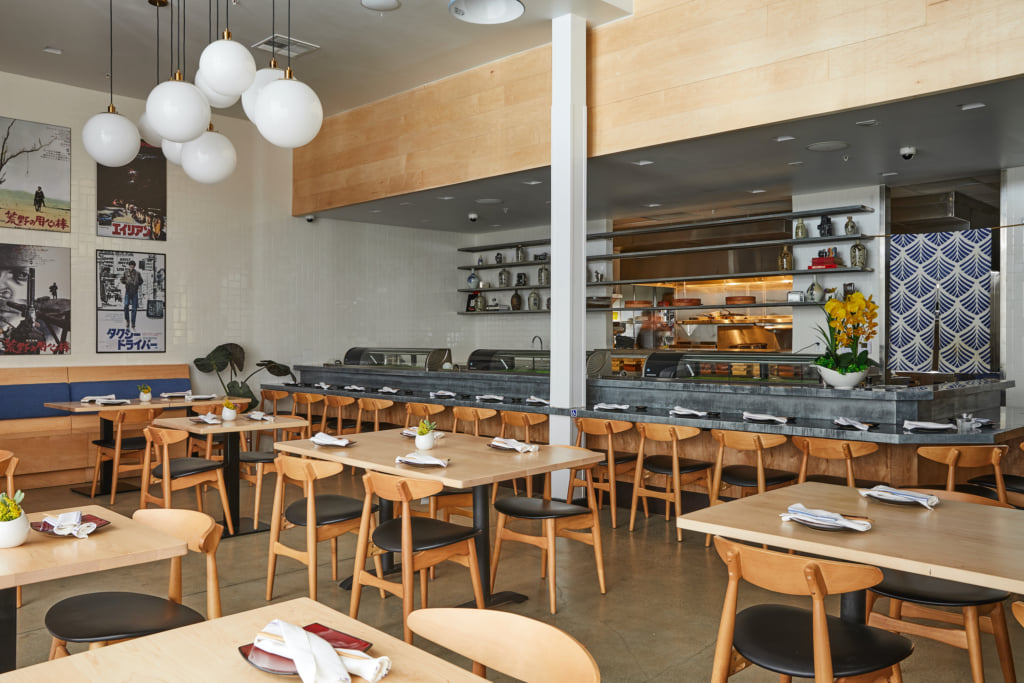
© Nicole LaMotte for Wick Architecture and Design
TRENDING
-
A House from the Taisho Era Reveals Its Secrets
While visiting an abandoned building, Hamish Campbell discovered photographs the owner had taken of the place in the 1920s.

-
The Taboo-Breaking Erotica of Toshio Saeki
The master of the 1970s Japanese avant-garde reimagined his most iconic artworks for a limited box set with silkscreen artist Fumie Taniyama.

-
With Meisa Fujishiro, Tokyo's Nudes Stand Tall
In the series 'Sketches of Tokyo', the photographer revisits the genre by bringing it face to face with the capital's architecture.

-
Masahisa Fukase's Family Portraits
In his series ‘Family’, the photographer compiles surprising photos in which he questions death, the inescapable.

-
Hajime Sorayama's Futuristic Eroticism
The illustrator is the pioneer for a form of hyperrealism that combines sensuality and technology and depicts sexualised robots.





